Social Innovation through Global Customer Co-creation
Initiatives in Europe
Europe is promoting initiatives that seek to identify the challenges facing mature societies and to bring about social innovation. This article describes the work being done in Northern Europe by national and regional government agencies that have relationships with Hitachi laboratories, and reports on what has been achieved and what challenges have been encountered. The initiatives described here are all targeted at the utilization and sharing of data to achieve new value and industrial development. Northern Europe is a leader in digitalization, and while debate about data distribution and other aspects of the digitalization of society has tended to focus on negative arguments such as privacy issues, having fostered the concept of “social benefit,” the region is taking steps to make society better for all citizens. The idea is that, to achieve Social Innovation, it is necessary first to reform society and foster a new culture.
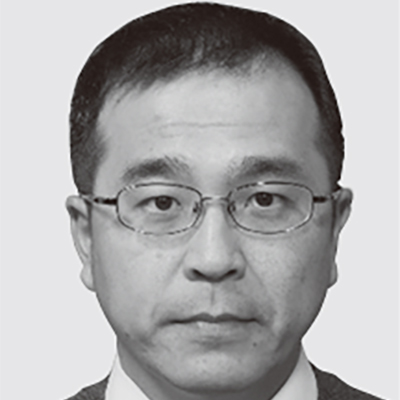
Systems Architecture Research Development, Center for Technology Innovation – Systems Engineering, Research & Development Group, Hitachi Ltd. Current work and research: Systems architecture design research. Society memberships: The Institute of Electrical Engineers of Japan (IEEJ), The Society of Instrument and Control Engineers (SICE), and the Japan Association of Real Options and Strategy (JAROS).
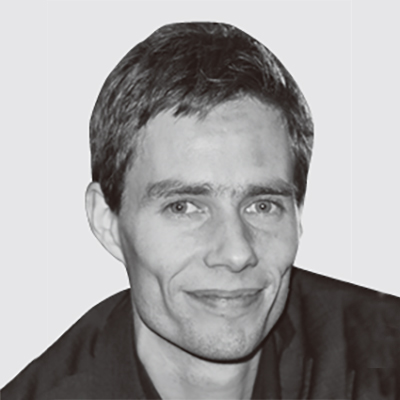
European R&D Centre, Hitachi Europe Ltd. Current work and research: Big data analysis research in Denmark. Society memberships: The Danish Operations Research Society (DORS).
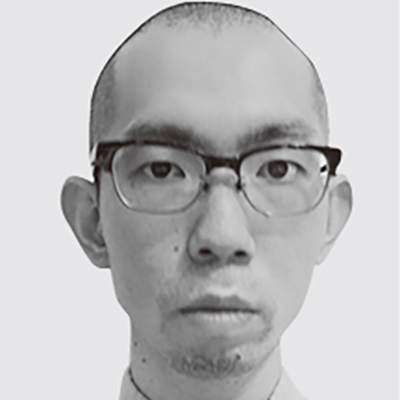
European R&D Centre, Hitachi Europe Ltd. Current work and research: Big data analysis research in Denmark.
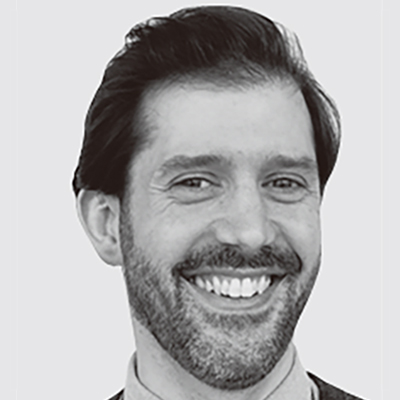
European R&D Centre, Hitachi Europe Ltd. Current work and research: Public safety service design in Europe. Society memberships: The Royal Society of Arts (RSA).
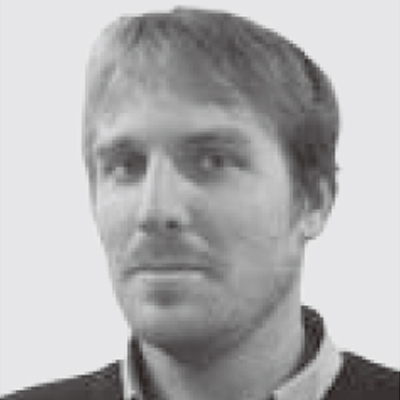
Europe launched the new Framework Programme for Research and Innovation, called Horizon 2020, in January 2014, which identified seven challenges for mature societies, including welfare, food, and transportation, and has embarked on initiatives aimed at creating social innovation. The Kingdom of Denmark, in particular, has set high national goals for things like expanding educational opportunities and achieving greater integration of IT into society through wider adoption of e-government, and is leading the world in adopting measures for resolving the challenges facing mature societies. As noted by the Danish Agency for Digitisation(1), one factor behind this is the aim of maintaining the quality of services despite the expectation that tax revenues will be 18% lower in 2040.
This article describes three initiatives being undertaken in Northern Europe by national and regional government agencies that have relationships with Hitachi, and reports on what has been achieved and what challenges have been encountered. These initiatives are targeted at the utilization and distribution of data to achieve new value and industrial development.
Northern Europe is a leader in the utilization of data. One example is the Central Person Registration (CPR) number that was introduced by Denmark in the early 1970s and is now an established part of the infrastructure of people's lives(2). It serves the same role as the Social Security and Tax Number System (My Number System) in Japan. Debate about data distribution and other aspects of the digitalization of society has tended to focus on negative arguments such as privacy issues. Having begun introducing such initiatives 30 years ago, however, the government of Denmark makes the case that the openness to data sharing that is characteristic of the citizens of Northern Europe has come about through the idea that it is making society better for everyone, having fostered the concept of social benefit.
In the healthcare field, Denmark has recognized that the rising cost of medical care poses an increasing burden on social security funding and is investing 40 billion krone (about 800 billion yen) over 10 years. The aim is to consolidate around 40 public hospitals into 16 state-of-the-art medical facilities (called “super hospitals”) while also improving hospital operational efficiency by 25%(3).
In 2014, Hitachi agreed to undertake joint solution development with Bispebjerg and Frederiksberg Hospital(4). In 2015, they fitted the staff at an existing emergency ward, intensive care unit, radiotherapy unit, and inpatient ward with “business microscopes” and other wearable sensors to record their movements. This demonstrated that changes in the ward layout of existing facilities had the potential to shorten travel distances by about 12%(5). These results were then applied in 2016 to the layout of a new hospital that was being designed at the time. As the proposed layout changes derived from the data had a number of features that gained the staffs' acceptance, the layout of the new hospital was modified accordingly (see Figure 1).
Figure 1—Changes to New Ward Layout at the Bispebjerg and Frederiksberg Hospital
 Optimization of ward layout was applied to the plan for a new hospital (top) that is currently in the design stage. The layout of the new hospital (bottom) was changed based on the insights derived from the data (left).
Optimization of ward layout was applied to the plan for a new hospital (top) that is currently in the design stage. The layout of the new hospital (bottom) was changed based on the insights derived from the data (left).
Figure 2—Results of Screening Data Analysis More than 80% of patients are involved in incidents in which an infection lasted for 25 days or more. More than 200 infected patients and more than 100 screenings could be prevented annually if the durations of all incidents could be kept to within 25 days.
More than 80% of patients are involved in incidents in which an infection lasted for 25 days or more. More than 200 infected patients and more than 100 screenings could be prevented annually if the durations of all incidents could be kept to within 25 days.
Hitachi started work on a hospital infection control initiative in 2016. The transmission of infections within hospitals is a major issue not only in Europe, but also around the world. It was estimated in 2008, for example, that the USA was spending 10 billion dollars annually on infection management(6). The comparable estimates for Japan and Denmark are respectively 1.7 trillion yen (as of 2009) and 270 million euros (as of 2014).
Analysis of vancomycin-resistant enterococci screening data over the past three years at Bispebjerg and Frederiksberg Hospital found that the incidence of prolonged infection was a major factor in the cost of infection management. For example, more than 200 infected patients and more than 100 screenings could be prevented annually if the duration of all hospital-transmitted infections could be kept to within 25 days (see Figure 2). In 2017, Hitachi participated in the collaborative creation of a solution that enabled a response to be mounted in days rather than weeks. This will work by using the technique for analyzing people's movements described in Section 2.2 to predict the risk of infection through contact so that isolation and other measures could be initiated without waiting for screening results to come back.
Figure 3—IoMT Platform Storyboard Hospitals in the near future will use IoMT systems to link people and materials via sensors and other devices so they can share data.
Hospitals in the near future will use IoMT systems to link people and materials via sensors and other devices so they can share data.
It can be concluded from these initiatives that new ways of utilizing and distributing data can help in making future improvements in productivity and quality at hospitals. It is anticipated that hospitals in the near future will use sensors and other devices to link people and materials, allowing them to share data (see Figure 3). To achieve this, Hitachi is developing an Internet of Medical Things (IoMT) system as well as a platform that can realize the benefits of data utilization.
The government of Denmark made a decision in 2014 to spend one billion dollars on installing an information technology (IT) platform for medical use from the US company Epic Systems Corporation in two major regions. The implementation was undertaken jointly with Epic and NNIT A/S, and the system covers 44% of Denmark's population, comprising more than 2.5 million patients. Consolidating all of this into a single platform is expected to bring major benefits to patients in Denmark in the form of reduced redundancy of medical IT systems and improved intersystem data communication and distribution(7).
Denmark also plans to bring consistency to its national medical IT framework by cutting the number of electronic health record systems it operates from 26 to just three. It will also provide patients with a single point of access for decisions and data sharing.
While not directly involved in the Epic project, Hitachi will be working with Copenhagen Emergency Medical Services (EMS) from 2017 on an initiative that uses the Epic system for the Copenhagen region to share data between organizations of different types.
The main task of Copenhagen EMS is to handle the response to emergency calls. It serves a total population of 1.7 million people and receives 130,000 emergency calls (112 calls) and 930,000 non-emergency calls (1813 calls) per year(8). With the call frequency having risen to 300 per day, Copenhagen EMS must spend less time on each call if it is to cope with this level of calls using its existing resources. Intended to help operators make quick decisions, an automated triage initiative launched in 2017 is taking on the challenge of using hospital medical records to prioritize patients (see Figure 4).
In addition to the ability of the Epic platform to ensure the smooth distribution of data between different organizations in the Copenhagen region, another factor that makes this possible is that all the information for individuals is linked together by their CPR identification number (referred to earlier). In Japan, the Ministry of Health, Labour and Welfare has announced a plan to launch a database from 2020 that will integrate various types of information, including hospital treatment records and medical examination results, and make it available at hospitals, nursing homes, and other facilities(9). Hitachi is working on the development of technology and solutions in Northern Europe where such initiatives are already under way.
Figure 4—Automated Triage for Emergency Calls Using Hospital Medical Records
 This initiative aims to make use of hospital medical records in triage (patient prioritization) by taking advantage of Denmark's CPR number, which links together all the data for each patient.
This initiative aims to make use of hospital medical records in triage (patient prioritization) by taking advantage of Denmark's CPR number, which links together all the data for each patient.
Figure 5—CLEAN's Vision Along with a variety of environmental projects, CLEAN, an organization involved in Denmark's adoption of innovative environmental and energy technologies, published its vision for collecting data from across the public and private sectors and for undertaking big data analytics that is beneficial for the environment. (The figure was prepared by the authors based on information on the CLEAN website.)
Along with a variety of environmental projects, CLEAN, an organization involved in Denmark's adoption of innovative environmental and energy technologies, published its vision for collecting data from across the public and private sectors and for undertaking big data analytics that is beneficial for the environment. (The figure was prepared by the authors based on information on the CLEAN website.)
Another leading initiative involving data distribution is the City Data Exchange (CDE) Project in Copenhagen.
Copenhagen has set itself a goal of becoming the world's first carbon-neutral city by 2025. The city plans to cut emissions from its current level of approximately two million tons of carbon dioxide each year to 1.2 million tons by 2025. To achieve this, the Copenhagen Cleantech Cluster (since renamed CLEAN), which is involved in Denmark's adoption of innovative environmental and energy technologies, published in 2014 its vision for digital infrastructure to collect data from across the public and private sectors and to undertake big data analysis that is beneficial for the environment(10) (see Figure 5).
Figure 6—Flow of Data Key to Growth in a 21st Century Economy CDE provides a data network for the free flow of data, giving rise to new economic activity and encouraging innovation and urban growth.
CDE provides a data network for the free flow of data, giving rise to new economic activity and encouraging innovation and urban growth.
Hitachi has played a central role in the project since 2015, working in consultation with the relevant agencies in Copenhagen and elsewhere to develop a data marketplace in the form of software as a service (SaaS) for the sale, purchase, and sharing of data between different organizations to encourage data distribution by public and private service providers in the city. The service was formally launched in Copenhagen in May 2016(11). The marketplace currently has around 140 different kinds of data derived from companies and other sources, and is working on service innovation in collaboration with a consortium of approximately 50 companies.
Along with the traditional flow of money, the flow of data is also seen as a key to the growth of 21st century economies. The CDE Project provides a data network over which data can flow freely, giving rise to new economic activity and encouraging innovation and growth (see Figure 6).
Data marketplaces enable companies to trade data with each other by making their in-house data commercially available. However, despite Northern Europe being a leader in data sharing, such markets remain an unknown quantity for the region. Although the initiative has caught their interest, the companies participating in the consortium remain guarded about the commencement of trading. This means that the CDE Project needs to take steps to encourage activity in the market.
One major issue is to establish the culture and practices for the trading of data between companies. It is difficult from the perspective of a data purchaser to set a price on data. There is a need for arbiters in data transactions who can value purchased data accurately and put it to appropriate use, as typified by the active recruitment of data analysts by companies in the USA where greater use is being made of data in corporate management. This can be likened to chefs at the fish market choosing the best fish to prepare in their kitchens. Data vendors, on the other hand, need to consider things like privacy protection and the rights to data, issues that have been debated for some time.
Although Northern Europe has made progress on establishing a legal framework, companies do not yet have an adequate understanding of the laws involved. There is also a desire to exert control over whom data are sold to, such as companies that would only like to sell their data as long as the buyer is not their competitor. While this goes against the idea of open trading, it is essential to the establishment of a market.
Steps are being taken to steadily boost market activity based on experience from the service's first year of operation, including data brokers who facilitate one-to-one transactions and a collaborative creation project for determining the value of data.
Measures like these are seen as vital for bringing about social innovation in the form of a data marketplace and for fostering a new culture.
Hitachi sees data distribution as the driving force behind the creation of the new economy. Data distribution and linking across different organizations and industries is boosting the scope of this economy. Hitachi is taking on a variety of challenges by partnering with people and organizations in Northern Europe who are working at a national level on the utilization and distribution of data. While some of these activities, such as the use of data in hospitals, have already begun to deliver results, Hitachi is also confronting new challenges in expanding the scope of data distribution.
Hitachi sees the Social Innovation it is seeking to bring about in terms of reforming society to foster a new culture. New technology is an essential ingredient for this, and Hitachi is confident that the technology it is developing will contribute to this reform of society.